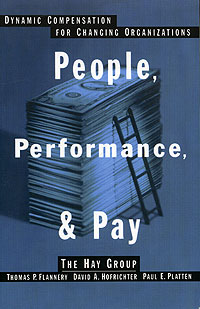In the rush to reengineer, implement TQM practices, form teams, and embrace other popular business strategies, most organizations have overlooked a critical component of successful change: how they pay their employees. Even though their responsibilities and corporate environments have undergone radical changes, most employees are still paid in the same ways they were paid twenty-five years ago. Thousands of companies still dole out annual merit increases and determine pay levels on the basis of employees" knowledge, length of service, number of direct reports, and rank on the organizational ladder -- values whose relevance has faded in today"s flatter, faster, more flexible business environment.
Now The Hay Group, which for the past forty years has set the standard globally for effective pay strategies, has addressed this important issue -- and once again has rewritten the rules for pay. People, Performance, and Pay identifies today"s four most common organizational work cultures -- functional, process, time-based, and network -- and explains how to align innovative pay policies with each. With examples from LEGO, Hallmark, Holiday Inn, and other leading organizations, the authors explain how to assess an organization"s current culture anddetermine what its future culture should be. They then demonstrate pay"s role in such change initiatives, and how compensation must be integrated with other human resource processes, such as selection, training, and performance management. They also discuss the full range of pay strategies available today and how they can be best used to move the organization forward; for example, they recommend decreasing an organization"s emphasis on base pay as it shifts from a functional culture to a process, time-based, or network culture. They also offer guidance on establishing team rewards, especially important in process and team-based cultures, and make a compelling case for putting more pay at risk through variable pay strategies. Here also is strategic adviceon competency-based pay, performance-based rewards such as gainsharing, executive pay, and benefits programs.
As responsibility for compensation strategies and compensation decisions shifts away from the realm of the Human Resource Department, line managers and senior executives will find People, Performance, and Pay an invaluable reference for effectively using salary, incentives, and benefits to motivate and reward employees, improve quality, and increase productivity. Это и многое другое вы найдете в книге People, Performance, and Pay: Dynamic Compensation for Changing Organizations
